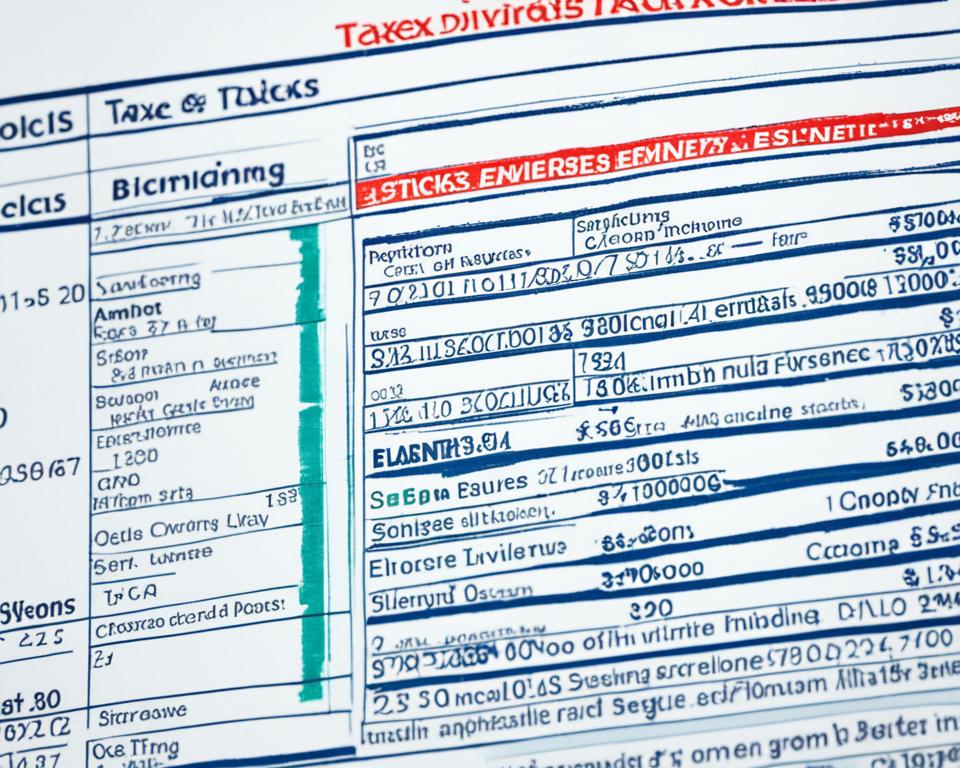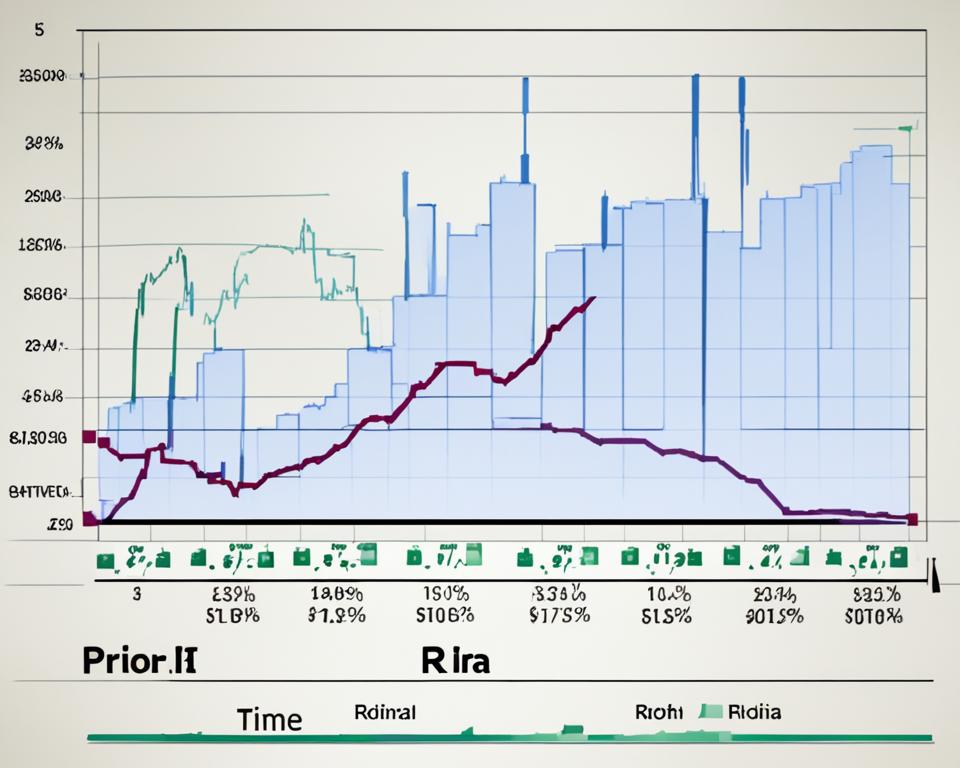Investing in dividend stocks presents attractive income opportunities for many people in the United States. However, before you dive headfirst into this kind of investment, it’s essential that you fully understand the tax implications of investing in dividend stocks. It helps to realize exactly how dividends are taxed, as it can significantly affect your potential gains.
Generally, dividends are classified into two types: regular and qualified. Regular dividends are taxed as ordinary income, while qualified dividends often enjoy much lower taxation rates, comparable to that of capital gains. A careful and strategic approach to your tax exposure can make a significant difference to your investment returns.
In addition to understanding the dividend stocks tax implications, investors need to consider other proactive measures to mitigate tax liabilities. For example, keeping your dividend stocks in tax-advantaged accounts, like IRAs, or engaging in tax-loss harvesting strategies, can help preserve and protect your returns. Moreover, bear in mind that if you decide to reinvest your dividends, this might trigger a taxation event which could further impact your after-tax profit.
Key Takeaways
- Dividends are generally categorized as regular or qualified, and each has unique tax implications.
- Understanding how dividends are taxed is crucial for investment planning.
- An investor’s choice of account can greatly impact the tax treatment of dividends.
- Proactive measures like tax-loss harvesting can help reduce tax liabilities.
- Dividend reinvestment, despite its benefits, may also trigger tax liabilities.
Understanding Dividend Stocks and Their Taxation
Investing in dividend stocks can be highly beneficial for acquiring a consistent stream of income. However, it does bring about certain tax consequences that investors should be aware of. Knowing how ordinary and qualified dividends are taxed can greatly affect your net investment returns. So, let’s delve into the tax effects of dividend stock investments and how different tax rates are applied to different types of dividends.
The Basics of Dividend Distributions
Firstly, it is crucial to clarify that the income received from dividend stocks is not free from tax obligations. In other words, when a corporation pays you dividends, those earnings are subject to taxation. This is integral to the overall understanding of dividend stock taxes and how they impact your investment earnings.
Ordinary vs. Qualified Dividends
Falling under the broad category of dividend stock investments, there are two different types of dividends that an investor can receive: ordinary dividends and qualified dividends. The primary distinction between these lies in how they are taxed. Ordinary dividends are taxed as ordinary income, while qualified dividends enjoy a more favorable tax treatment, being taxed at the same rates as long-term capital gains. However, not all dividends qualify for this preferred tax status. Certain criteria regarding the company’s location and the investor’s share holding period must be fulfilled.
Tax Rates for Different Types of Dividends
The tax consequences of ordinary and qualified dividends also differ based upon the taxpayer’s income bracket. Those earning less may potentially be exempt from paying any taxes on qualified dividends, while those in higher income brackets could be taxed up to 20%. It’s important to note that investing in foreign based companies may also warrant an additional layer of complexity when it comes to understanding the tax effects of these investments.
Overall, properly recognizing and understanding these different dividend types and their respective tax rate implications is crucial in efficiently managing the tax ramifications of any dividend stock investments.
The Role of Investment Accounts in Dividend Taxation
Understanding how different types of investment accounts can influence the tax liabilities on dividends is a crucial aspect of dividend investing tax implications. The tax treatment of dividends can vary significantly based on whether they are held in tax-advantaged or taxable accounts. Let’s take a deeper look into this crucial concept of dividend investment.
Tax-Advantaged Accounts: IRAs and 401(k)s
Investment accounts such as Individual Retirement Accounts (IRAs) and 401(k)s are classified as tax-advantaged accounts. These have been designed with incentives to encourage long-term investment and retirement savings. When dividend stocks are held in these accounts, any dividends earned can potentially grow tax-free or be deferred to be taxed at a later date, potentially when the investor is in a lower tax bracket. The difference in tax burdens can be significant especially for investors in the higher tax brackets.
Taxable Brokerage Accounts and Their Impacts
On the other hand, standard brokerage accounts do not provide the same tax benefits. When dividend stocks are held in these accounts, the dividends are subjected to taxation immediately, irrespective of whether they are reinvested or cashed out. For investors in high tax brackets, the implications are significant, and the tax levied could limit the overall yield of their investments.
The decision on the type of investment account to hold your dividends should not be made lightly. It forms a pivotal part of dividend investing strategy and plays a crucial role in determining if your returns are tax efficient. It is hence of utmost importance for investors to comprehend and leverage this element of dividend investing tax implications to maneuver their investment strategies for optimal growth and returns on their dividend investments.
What are the tax implications of investing in dividend stocks
Investing in dividend stocks can offer a lucrative income stream. However, comprehending the potential tax consequences is pivotal. There are distinct categories of dividends, each with individual tax implications. Additionally, your investment strategy and account type can significantly impact your tax liabilities.
It’s important not to underestimate the effect of taxes on your final returns.
- Ordinary dividends
- Qualified dividends
- Non-dividend distributions
The tax implications can significantly differ among these dividends categories. Therefore, understanding the differences and planning accordingly is crucial to optimize your tax liabilities and, consequently, your net income from dividend stocks.

Proactive measures, such as investing through tax-advantaged accounts or employing tax-loss harvesting strategies, can potentially mitigate tax liabilities. Furthermore, optimizing the type of dividends you invest in (qualified or ordinary, for instance) can have a powerful effect on the taxes you owe.
In the following sections, we will delve deeper into these categories and examine certain strategies that may help you navigate the complex world of taxes for dividend investors.
No matter what your investment strategy is, being aware of these potential tax implications can make a world of difference when planning for the future.
How Qualified Dividends Benefit Dividend Stock Investors
One of the significant wonderful advantages when venturing in dividend stock investing are the tax benefits of qualified dividends. Fundamentally, qualified dividends earn their merits due to their friendly tax treatments in comparison to ordinary dividends.
So, what sets qualified dividends apart? The dividends are traditionally released by U.S. companies, including certain foreign companies listed on main U.S. exchanges. However, shareholders must meet the condition of holding the stock for a specific duration to enjoy the benefits of a qualified dividend tax treatment.
These dividends are then taxed at advantageous rates, based on the investor’s taxable income and Adjusted Gross Income (AGI). Specifically, tax rates on these dividends range between a 0% minimum and a 20% maximum, which is considerably lower than the average tax rates on ordinary income.
| Taxable Income | Qualified Dividend Tax Rate |
|---|---|
| Up to $40,000 (Single) | 0% |
| Over $40,000 up to $441,450 (Single) | 15% |
| Over $441,450 (Single) | 20% |
It is worth noting that investment strategies that prioritize qualified dividends typically lead to more appealing after-tax returns. As such, they become an essential parameter for investors who are keen on increasing their income from dividend stocks. It is indeed the tax advantage that can make a significant difference in the overall return on your investments.
Dividend Reinvestment Plans and Tax Implications
In the world of dividend investing, the twin concepts of Dividend Reinvestment Plans (DRIPs) and the taxation that intertwined with them play a crucial role in shaping an investor’s returns. These mechanisms, while enabling automatic reinvestment of dividends, carry their unique tax implications, woven into the broader fabric of stock dividend taxation. Here, we delve into these intricacies and their possible impacts on your investment strategy.
Automatic Dividend Reinvestment Tax Considerations
DRIPs serve as an attractive option for investors subscribed to the growth-through-compounding philosophy. Through these plans, investors can automatically plow back a company’s dividends into buying more shares, fueling the power of compounding. Yet with this automatic dividend reinvestment comes a caveat – the tax obligation. Even in the absence of a hard cash receipt, these reinvested dividends are nonetheless subject to taxation, as if received in cash. Essentially, tax authorities view these reinvested dividends as ordinary income, thereby requiring their declaration during tax filing season.
The Advantage of Direct Stock Dividend Receipts
In contrast to automatic reinvestments, some investors may opt to take dividends in the form of additional shares. Often, such a course of action can defer taxation until these stocks are eventually sold, a future event. However, this strategy isn’t devoid of tax implications. The receipt of dividends, even in the form of stock, is still recognized as a taxable event. Therefore, investors must think through their preferred method of receiving dividends, to minimize the potential tax hit.
Understanding the dividend reinvestment tax implications and harnessing this knowledge can lead to a more effective, efficient, and tax-smart investing strategy.
Capital Gains and Dividend Investing
When investing in dividend stocks it’s important to understand the different tax implications on the capital gains you may accrue. Being aware of these considerations can help you plan a more effective and tax-efficient strategy for your investments. Let’s take a closer look at short-term versus long-term capital gain taxation and strategies for managing capital gains taxes.
Short-term vs. Long-term Capital Gain Taxation
One essential understanding in dividend investing is the way capital gains tax applies to your returns. This tax is influenced by the duration for which the investments are held and the realization of profits. Generally, the capital gains tax applies to the profits made from the sale of an asset and differs according to how long the asset was held.
| Type of Capital Gain | Description | Tax Rate |
|---|---|---|
| Short-term Capital Gain | Gains from assets held for a year or less. | Ordinary income tax rates |
| Long-term Capital Gain | Gains from assets held for more than a year. | 0%, 15%, or 20%, depending on your income |
Strategies for Managing Capital Gains Taxes
Various strategies can help you manage and potentially reduce your capital gains tax liabilities when investing in dividend stocks. One effective approach, known as tax-loss harvesting, involves selling stocks that have declined in value to offset the capital gains from profitable stocks. But, remember that you’ll have to navigate around “wash sale” rules when using this strategy.
- Wash sale rule: This rule disallows claiming a tax loss if you buy the same or a “substantially identical” stock within 30 days before or after the sale.
- Timing your sales: By holding on to an asset for over a year, you can potentially take advantage of lower long-term capital gain tax rates.
Implementing these strategies can make a significant difference to your capital gains tax liabilities and, by extension, your net returns from dividend investing.
Strategic Tax-Loss Harvesting with Dividend Stocks
Tax-loss harvesting allows dividend stock investors to leverage losses to offset gains. The practice revolves around the concept of selling underperforming investments to generate a capital loss. This capital loss can then be used to offset the taxable income accrued from dividends, or the sale of other prosperous investments. However, it’s not as simple as harvesting losses at whim, it requires strategic timing and an astute understanding of particular tax rules.
“Wash sale” rule disallows a tax deduction for a security sold at a loss, which is then repurchased within a 30-day period. This rule exists to prevent investors from claiming artificial losses.
With a keen grip on the mechanics of the rule, tax-loss harvesting can be a critical tool in reducing the overall tax impact on investment portfolios.
Let’s map the distinct steps an investor needs to follow to implement a tax-loss harvesting strategy:
- Identification of Underperforming Securities: This involves monitoring your portfolio and identifying the investments which have incurred losses.
- Consideration of the “Wash Sale” rule: Before selling off the loss-making investment, ensure you do not plan to repurchase the same or a substantially similar stock within the next 30 days.
- Execution of the Sale: With the eligibility confirmed, proceed to sell the losing investment off.
- Application of Losses: Apply these losses against any capital gains you have made in your portfolio. If your losses exceed your gains, you can apply up to $3000 of your losses against other income. Any remaining losses can be carried forward to future years.
Understanding tax-loss harvesting can potentially reduce your taxable income, eventually ensuring increased returns on your investments in dividend stocks.
| Steps | Description |
|---|---|
| Identify Underperforming Securities | Monitor portfolio regularly to spot investments with losses |
| Consider ‘Wash Sale’ Rule | Ensure no repurchase plans for the same/similar stock within 30 days of the sale |
| Execute Sale | Sell off the loss-making investment |
| Apply Losses | Offset these losses against capital gains or other income |
Properly implemented, strategic tax-loss harvesting can potentially unlock more value from your investments, effectively increasing your overall returns.
Navigating Taxes on Dividends for Unique Entities
Understanding the tax landscape becomes increasingly critical when dealing with dividends from unique entities such as mutual funds and Real Estate Investment Trusts (REITs). Let’s delve into the details of tax reporting and capital gain distributions associated with these special circumstances. But before that, consider the figure below, which provides a snapshot of various dividend sources and their tax interactions.
Tax Reporting for Mutual Funds and REITs
Dividend investors who have ventured into mutual funds, partnerships, trusts, S corporations, and REITs encounter distinct tax considerations. Instead of the usual corporate dividends, these non-traditional entities offer distributions that carry unique tax implications. A clear understanding of mutual fund dividend taxes and REIT dividend taxation is vital for accurate tax reporting and compliance.
Investors typically receive either a Schedule K-1 or Form 1099-DIV to document their dividend earnings from these entities. Regardless of the form received, investors are legally obligated to report these earnings to the IRS.
Understanding Capital Gain Distributions and Taxes
Capital gain distributions, particularly those originating from mutual funds and REITs, are taxable. Investors should report these distributions as long-term capital gains – regardless of how long the investor has owned shares in the mutual fund or REIT. This is an important distinction from standard dividends, as different tax rules apply.
Here’s a concise table detailing the tax treatment of different types of dividend income:
| Type of Dividend | Tax Treatment |
|---|---|
| Regular Corporate Dividends | Taxed as either ordinary income or at special capital gains tax rates |
| Mutual Fund Dividends | Taxed as ordinary income or capital gain |
| REIT Dividends | Typically taxed as ordinary income, but some exceptions apply |
| Capital Gain Distributions | Always treated as long-term capital gains |
Navigating the tax landscape for dividends can be complicated, particularly when dealing with unique entities like mutual funds and REITs. However, with a clear understanding and prudent tax planning, investors can effectively manage their tax obligations and protect their investment returns.
Important Considerations for Reporting Dividend Income
When it comes to the world of investments, taking care of dividends is as crucial as earning them. For tax purposes, it is paramount to understand that all dividend income must be reported, irrespective of whether the investor has received a Form 1099-DIV or not. There are several intricacies and considerations that one must be prepared for when reporting dividend income, and in this section, we’ll elaborate on the significance of various forms and how to report dividends when such forms are not available.
The Significance of Form 1099-DIV and Schedule K-1
Each tax season, investors will typically receive a Form 1099-DIV from corporations or mutual funds that have paid them dividends in the previous year. Similarly, owners of partnership units, beneficiaries of trusts and estates, and possibly some shareholders of S corporations and mutual fund shareholders should expect to receive a Schedule K-1. Both of these forms are important for tax reporting purposes. However, there are occasions when these expected documents may not arrive.
Reporting Dividends Without Forms: What You Need to Know
Irrespective of whether you receive the expected forms or not, if you have dividends exceeding $10, you are compelled to report them. This also applies to dividends gained from non-corporate entities that may not typically issue a Form 1099-DIV or Schedule K-1. The IRS makes it clear that taxpayers are responsible for declaring all taxable dividends. Failure to do so could potentially result in penalties. So, even in the absence of these forms, make sure your reporting of dividend income is precise and accurate.”
Non-Dividend Distributions and Their Implications
As we delve deeper into the world of dividend stocks, come several nuanced tax considerations. One such facet that significantly influences investor taxation is non-dividend or liquidating distributions. Let’s distinguish between taxable and non-taxable distributions, and understand how to handle liquidating distributions on your taxes.

Distinguishing Between Taxable and Non-Taxable Distributions
Typically, non-dividend distributions act as a return of the capital invested in a company. They alter an investor’s cost basis in the stock. Such distributions are interestingly tax-exempt until the total basis in the stock is fully recovered. Meanwhile, any distribution exceeding this basis is liable for taxation. So, how does liquidating distribution taxation occur? Let’s explore.
Handling Liquidating Distributions on Your Taxes
Liquidating distributions are a variant of non-dividend distributions that contribute to the tax treatment of the stock basis. In these instances, any funds exceeding the stock’s initial investment or ‘basis’ are taxed as a capital gain.
| Type of Distribution | Tax Treatment |
|---|---|
| Non-dividend Distribution | Not taxable until the basis in the stock is fully recovered. |
| Liquidating Distribution | Any amount exceeding the basis is taxed as a capital gain. |
In conclusion, both types of distributions have unique tax implications. Having a firm grasp of these concepts is pivotal for maintaining accurate tax reporting and optimizing one’s tax situation. Remember, a clear understanding of your distributions can help you avoid unwanted surprises during tax season. Stay updated, understand correctly, and sail smoothly through your investing journey!
Conclusion
Investing in dividend stocks necessitates a careful examination of tax implications to optimally manage their impact on returns. Embracing certain financial strategies can contribute to a more tax-efficient investment approach, which will subsequently enhance returns from dividend stocks. Noteworthy amongst these are managing dividend stock taxes, coupling this with tax-smart investment strategies that can make a significant difference in one’s overall financial profile.
One such approach includes focusing on qualified dividends. These dividends, taxed at a lower rate, have the potential to tilt the profit scale favorably for an investor. Utilizing tax-advantaged accounts such as IRAs and 401(k)s can further optimize the tax situation concerning dividends. There are advantages to be had with both immediate and deferred tax benefits.
Moreover, practicing tax-loss harvesting can be an effective method to balance out gains with losses. This strategy is a practical tool for mitigating the tax effects on capital gains from dividends. Of equal importance is the understanding and application of tax requirements pertaining to various types of distributions. This ranges from non-dividend distributions, which can affect the tax treatment of individual stocks, to managing the taxation of mutual funds, REITs, and other specific entities.
In conclusion, while tax considerations should not overly dominate investment decisions, proactive tax management will contribute positively to an investor’s overall financial health. Therefore, it is of utmost importance to remain vigilant and mindful of potential tax consequences to preserve and expand one’s investment portfolio’s profitability and health.
FAQ
What are the tax implications of investing in dividend stocks?
The tax implications of investing in dividend stocks primarily revolve around how dividends are taxed. Dividends can either be regular, taxed as ordinary income, or qualified, subject to lower capital gains tax rates. Dividend stock investors may also face tax implications based on the type of account where dividends are held, with tax-advantaged accounts providing ways to mitigate overall tax burdens.
How are dividends from investments taxed?
Dividends from investments are either taxed as ordinary income or as qualified dividends depending on certain qualifications like the company’s location and holding period. Ordinary dividends are taxed at the same rate as other ordinary income, while qualified dividends enjoy a lower tax rate, similar to capital gains.
How are dividend investments affected by the type of investment accounts?
The type of investment accounts plays a significant role in the taxation of dividends. In tax-advantaged accounts like a 401(k) or an IRA, dividends can grow tax-free or be taxed at a later date when the investor may be in a lower tax bracket. Meanwhile, holding dividend stocks in standard brokerage accounts exposes these gains to immediate taxation.
What is the tax treatment for qualified dividends?
Qualified dividends are taxed at lower rates compared to regular dividends, with rates ranging between 0% and 20% based on the investor’s taxable income level. To qualify for these favorable tax rates, certain criteria must be met, including the type of company issuing the dividends and the length of time the investor holds the stocks.
How is the tax situation affected by dividend reinvestment plans (DRIPs)?
While Dividend Reinvestment Plans (DRIPs) allow investors to automatically reinvest dividends into additional shares, these reinvestments still trigger taxes as though the dividends were received in cash. This means the dividends, even if reinvested, are taxable, thereby affecting the real profit from investments.
What are the tax implications of capital gains from dividend investing?
Dividend investing can result in both short-term and long-term capital gains which have different tax rates. Long-term capital gains, derived from holding assets longer than a year, benefit from lower taxes than short-term gains. Investors can adopt strategies such as tax-loss harvesting to reduce capital gains tax liabilities.
How does tax-loss harvesting work with dividend stocks?
Tax-loss harvesting is a strategy used by investors to offset the taxable income gained from dividends or the sale of other assets. By selling investments that have decreased in value, investors can create a capital loss that lowers their taxable income, thereby reducing their overall tax burden.
How are dividends from mutual funds, partnerships, and trusts taxed?
Investors receiving dividends from these entities may need to report dividend income via a Schedule K-1 or Form 1099-DIV. Capital gain distributions, often from mutual funds or REITs, are also taxable and should be reported as long-term capital gains. Proper reporting is essential for tax compliance and accurately reflecting income.
How should dividends be reported on tax returns?
All dividend income must be reported on tax returns, whether investors receive a Form 1099-DIV, Schedule K-1, or not. Dividends exceeding $10, including ones from entities that do not traditionally issue the aforementioned forms, must be reported.
What are non-dividend distributions and how are they taxed?
Non-dividend distributions, often a return of capital, are not taxable until the basis (investment cost) in the stock is fully recovered. After that, these distributions are then taxed as capital gains. Understanding these types of distributions is vital for accurate reporting and optimizing one’s tax situation.












